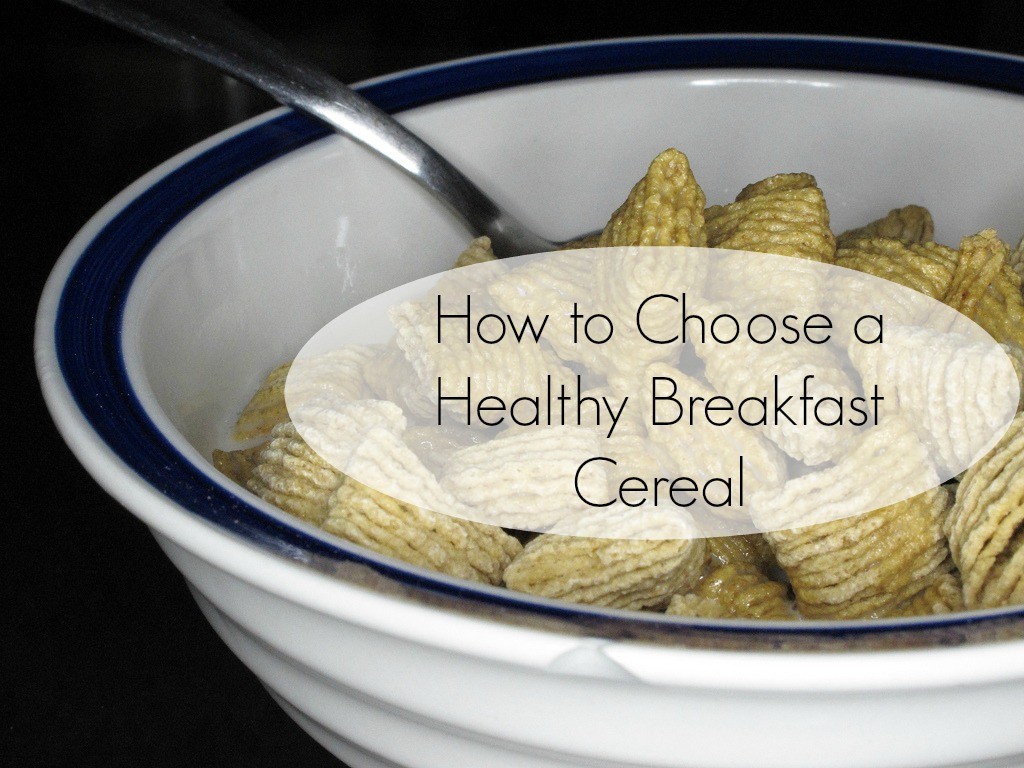We eat a lot of cereal in the morning. My oldest son lives for his morning cereal. It’s sort of like coffee for a 12 year old. Call it habit or routine-it gets ugly around here if we run out of cereal. As a mom who cares about what her kids eat (just like many of you) I know the importance of making sure the cereal is healthy and packed with as much nutritional value as possible.
A few of the same cereals have been filling my cabinet shelves for many years and truthfully I have become complacent with my cereal choices and forgot to heed my own advice: not everything you buy at a health food store is healthy [2]. After posting a photo of my cereal cabinet on Facebook my lovely Facebook community [3] was quick to point out that some of the cereals in my cabinet are loaded with pesticides and GMO’s. Not good.
Now we are on a mission to find new and improved cereals. There are a few simple rules that I’m determined to follow.
Watch out for GMOs (genetically modified organisms)
Did you know that 61 other countries require that their genetically modified foods be labeled? The US isn’t one of those countries. Most consumers want to know what going into their food. Yet in the US the FDA doesn’t require the labeling of GMOs [5] in food ingredient lists. California is paving the way for change with Prop. 37 and although it’s a California initiative, if passed in November it will hopefully have positive national implications on the requirement of labeling GMOs on all food products. For now finding food that doesn’t contain GMOs can get tricky. Just because a product is organic doesn’t necessarily mean it’s GMO free. Look for food labels that say “non-GMO” or “GMO free”. There seem to be more and more companies willing to label their products, although not required.
Steer clear of artificial colors
With childhood cancers on the rise (A report [6] from the National Cancer Institute showed a 9.4% increase in childhood cancer between 1992 and 2007) it’s mind boggling to me that artificial food dyes [7] are still used in food- in everything from M&Ms and Fruit Loops to Kraft Mac n Cheese and Kellogg’s Fruit Snacks—when it’s been shown that these dyes pose risks of cancer, hyperactivity in children, and allergies. Artificial food dyes don’t belong in our food. Period.
Added sugar v. natural sugar
To figure out whether or not sugar has been added to your breakfast cereal requires a little detective work. The front of the cereal box can be deceptive with claims of “little sugar” or “slightly sweetened” so head over to the Nutrition Facts panel on the side of the cereal box. Find the line item which lists the grams of sugar in the cereal. Then take a look at the serving size at the top of the panel. If the cereal says it has 15 grams of sugar and has a serving size of 30 grams that’s a lot of sugar! Remember food makers are required to list all the ingredients in a product in descending order by weight. So if an ingredient is at the top of the list there’s a lot of it in the product! HERE’s a list of different names for sugar that could be hidden on the label.
Look for whole grains
Remember food makers are required to list all the ingredients in a product in descending order by weight. So one of the first ingredients should be a whole grain [8]. The ingredient list must include the word WHOLE. Don’t be fooled by the wording “unbleached wheat flour”, “wheat flour” or “stoned wheat”. These are not whole grains. Also a product might claim “made with whole wheat” or “made with whole grains”. If the whole grain is way down the ingredient list there isn’t much of it in the product.
Avoid rice products
New tests by Consumer Reports [9] have found that organic rice baby cereal, rice breakfast cereals, brown rice, white rice and other types of rice products on grocery shelves contain arsenic, many at worrisome levels. Unfortunately, it’s pretty challenging to avoid rice products in breakfast cereal-they’re everywhere. Best thing to do is read the labels and try to vary the grains in your cereal. There are also several ways to eat rice safely [10].
Buy in bulk
Head to the bulk bins [11] at your local grocery store and create your own fabulous breakfast cereal. Mix together organic, non-GMO grains, nuts, raisins and your cereal creation will be unique and much less expensive than the boxes in the cereal aisle.
Let’s see if we can make a list of healthy and safe cereals. What are your favorite brands?
P.S. If you liked this post you might enjoy our Groovy Green Livin Newsletter [12]. Receive new posts and special opportunities delivered right to your inbox! Sign up HERE [12].

